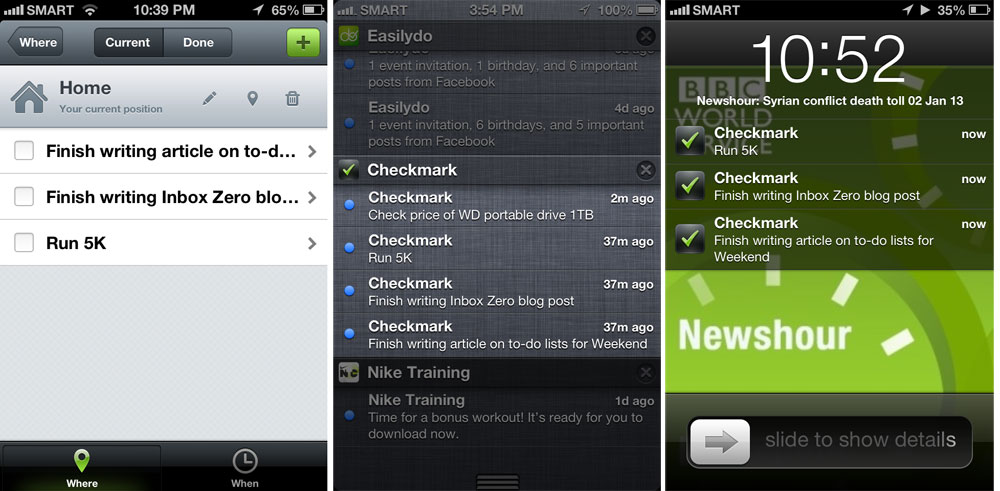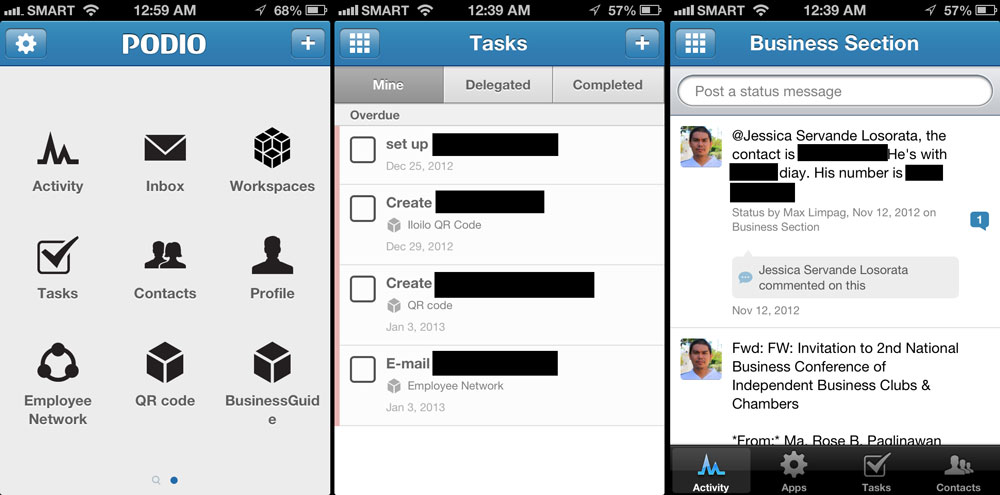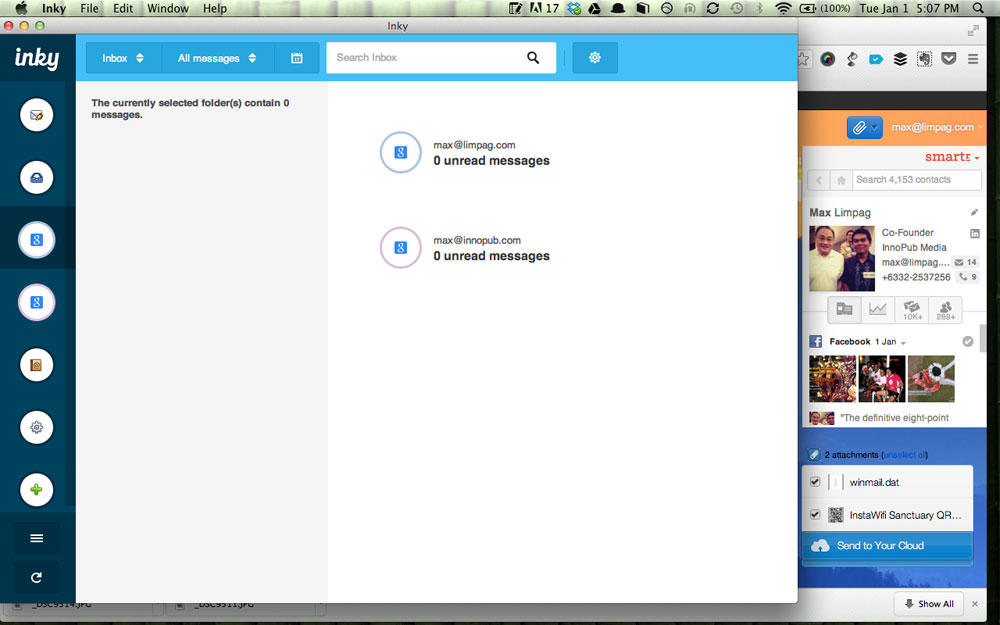(I wrote this for an article on digital to-do lists for the Sun.Star Cebu Weekend)
I arrived home to the ding of my phone reminding me to run 5K and finish writing this article on to-do lists and a blog post on Inbox Zero.
My phone flashed the reminders because it detected, through global positioning system (GPS), that I was home.
Beyond calling, today’s phones have become our main computer. For many people, it already is the main device to read or send e-mails. Increasingly, it is how people access social networks like Facebook.
If there’s one task phones are really good at, it’s keeping to-do lists. Even before smartphones, people were already keeping to-do lists via the SMS editor, alarm system, calendar feature or the rudimentary notes facility built into some phones to keep track of tasks.

CHECKMARK. The app, which is available only on the iPhone, allows you to set location-based reminders. The images above, taken at various times, show notifications flashed by the app.
Productivity apps are a dime an unli-SMS bucket today and you’d have a hard, albeit fun, time figuring out which app works best for you.
What makes the task of choosing an app even harder is the tight competition for features and users, with developers releasing updates every few months or so in a frenzied apps race where users, millions of users, are the top prize.
I’ve gone through the gamut of the top productivity and to-do list apps. My failure to stick with one isn’t as much as being fickle as making sure that I’m using the best app currently in the market, or so that’s how I justify it to myself. And I also need to constantly try out applications for my blog and technology column.
My current trifecta to handle tasks consists of a small notebook (of the paper kind) and the apps Checkmark and Podio. I use Checkmark for location-based reminders and Podio for project management and collaboration. But ask me again a few months from now and I’d likely name different apps – only the paper notebook is constant.
Here are some apps that I’ve tried in using apps and digital tools to keep track of tasks in the past couple of years.
Checkmark
The app allows you to set reminders by locations. The technical term for this is “geofencing.” The app is still exclusive for the iPhone and costs $4.99 but I got mine for free when the developer held an “end of the world sale” last Dec. 12. Thank heavens for Mayans, if only because I got the app for free.
Getting location-based reminders is already part of the feature of the iPhone’s built-in Reminders app but Checkmark simplifies the process.
Checkmark is beautifully designed and easy to use. Adding locations is just a matter of zooming into a map, dropping a pin and deciding on the radius. The app also allows users to designate recurring reminders.
I find the app so useful that I actually turn on my phone’s GPS, which eats up power and allows systems to keep track of your movements, so that I could use it.

PODIO. Podio is among the best project management systems available on the Web today. It allows you to customize your space to fit your workflow. It’s iOS and Android apps are also very good and can be customized.
Podio
For project management and collaboration, nothing available for free today beats the features of Podio, a project management service with premium paid plans.
Podio is a very useful app for companies or groups. It offers the usual task management and tracking and the accompanying bells and whistles for collaboration but excels in one thing—it allows you to add functionalities via free apps you can download from the Podio app market or build on your own using a visual drag-and-drop editor.
Podio has good apps both for iOS and Android that you can also customize.
Any.DO
Before I got Checkmark for free, Any.DO was my to-do list of choice. It works on iOS, Android and the Web and keeps everything in constant sync.
Any.DO segregates your tasks by deadlines – Today, Tomorrow, Upcoming and Someday. The app is great-looking, responsive and easy to use. In Android, the app has the added functionality of listing your tasks in a homescreen widget, allowing you a quick look of pending duties.
The Chrome app also makes it easier to enter tasks or manage existing ones.
Any.DO recently added location-based reminders on the iPhone but it isn’t as polished as Checkmark. That will change, I think, in the coming months and when it does, I’ll swap apps in an instant.
Astrid
Astrid is a robust productivity tool with collaboration capabilities. It is a Web-based service with apps for iOS and Android and Google Chrome.
Astrid was picked the most popular to-do list manager last July in the Hive Five of Lifehacker, the favorite portal of geeks and productivity nerds.
I used Astrid for some time last year and the mobile app was fast. The only reason I left it for Any.DO was because the latter’s widgets on Android were better. To get bigger Astrid widgets on Android, you need to buy its premium pack.
The post To do: Install to-do apps on phone appeared first on Leon Kilat : The Tech Experiments.
